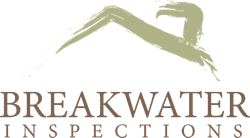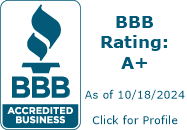Should I test for mold?
Molds are organisms that are found indoors and outdoors. They are part of the natural environment and play an important role in our ecological system by breaking down and digesting organic material. Molds are neither plants nor animals, but “fungi”. Fungi belong to a classification of their own.
Yeast, mold, mildew and mushrooms are common forms of fungi. Mold is essentially a description of fungi that grows on surfaces, such as the black substance on a moldy shower wall. Mold and mildew often refer to the same type of fungi. All mold is fungi, but not all fungi is mold. Molds grow in many colors, including white. “Black mold” is not a species or specific kind of mold, and neither is “toxic mold.”
Sometimes, the news media use the terms “toxic mold” and “black mold” to refer to molds that are a health hazard.Well water is often affected by chemicals or fertilizer bi-products leaching into the ground or streams that feed the aquifers that supply the well. Sometimes the source of the contamination is a chemical or mineral deposit deep in the ground that the aquifer runs through. It is also possible for well casings or heads to become damaged and allow chemicals or animal bi-products to pollute a well from the surface.
Where is Mold?
Mold spores are everywhere; they are found both indoors and outdoors. Mold spores cannot be eliminated from
indoor environments because some of them will be floating through the air and could be on settled dust.
Should I be concerned?
Mold is not usually a problem indoors unless the spores land on a wet or damp surface and begin growing. As molds grow, they digest whatever they are growing on. Unchecked, mold growth can damage buildings and furnishings; molds can damage wood, damage drywall, and in extreme cases cause structural damage to buildings. The potential human health effects of mold are also a concern. It is important, therefore, to prevent mold from growing indoors.
Fungi in the indoor environment raises three major concerns:
1. The potential health effects of exposure to fungi and their byproducts;
2. The effects of fungal contamination on the structural integrity of a building; and,
3. The negative aesthetic effects fungi can produce both visually and on the human nose (smell).
Although the issue of whether exposure to indoor fungi causes adverse health effects is controversial, there is no
doubt that a seriously mold-contaminated building can suffer structural damage, and that a foul-smelling, fungus filled building is aesthetically unpleasing. Controversies about health effects aside, the latter two reasons are sufficient to merit a Complete Mold Inspection and remediation when an environment is found to have fungal
contamination. People who have concerns about structural damage, the aesthetic effects, or possible effects on health of indoor fungi should seek the services of a Certified Mold Inspector. People who have concerns about possible effects they may be experiencing related to mold should seek the advice of a healthcare professional.
What are some Common Health Concerns?
Inhaling mold indoors can cause negative health effects in some people. Molds produce allergens, irritants, and
in some cases, potentially toxic substances (mycotoxins). Inhaling or touching mold or mold spores may cause
allergic reactions in sensitive individuals. Mold does not have to be alive to cause an allergic reaction in some
people. Some people can be particularly sensitive; infants, children, elderly people, individuals with respiratory
conditions (such as allergies and asthma), and people with weakened immune systems. Allergic reactions to mold can occur in people who have sensitivities.
What are some Common Symptoms of Mold Exposure?
There are many symptoms of mold exposure. Current evidence suggests that allergies or allergic reactions are
commonly associated with reactions to mold exposure. Most commonly the reactions include coughing, wheezing,
and difficulty breathing. Other symptoms can include “hay fever”-like symptoms, such as headache, sneezing, runny nose, irritated eyes, and skin rash (dermatitis). Molds can cause asthma attacks in people with asthma who are allergic to mold. Fungi in buildings may cause or exacerbate symptoms of allergies, especially in persons who have a history of allergic diseases (such as asthma and rhinitis). In addition, molds can irritate the eyes, skin, nose, throat, and lungs of individuals, whether or not the person is allergic to mold. Other symptoms include nasal and sinus congestion, burning, watery and red eyes, a sore throat, a dry cough, and skin irritation.
For more detailed information on mold and its health effects, consult a healthcare professional or the state or local health department. It is important to understand that Certified Mold Inspectors cannot offer medical advice to clients. People with health problems that may be related to mold should seek a physician trained in occupational, environmental or allergy medicine.
Where does Mold Grow?
Most of the mold found indoors comes from the outdoors because mold spores can easily float on gentle air currents. If the spores land on suitable organic material inside a building, mold can begin to grow. Once mold spores are present, mold needs three things in order to grow.
1. Moisture
A little moisture or condensation can be enough. Common sites for indoor mold growth include tile and grout, basements, attics, and areas around windows and sinks. Sources of water or moisture include roof leaks, condensation due to high humidity or cold spots, leaks at plumbing fixtures, and floods. Mold has been found to germinate, grow and produce spores in as little as 24 hours after water damage occurs. Controlling indoor moisture helps limit mold growth. Moisture control is the key to mold control.
2. Food
Mold also needs food to grow and can grow on virtually any organic substance. Buildings are full of materials that
mold can use as food, including paper (such as on drywall surfaces), cloth, wood, plant material, and even soil. Molds secrete digestive enzymes that decompose the substrate, making nutrients available. Some molds can even digest synthetic materials such as adhesives, pastes and paints. Molds can also grow on inorganic material, such as concrete, glass and metal, because it can grow on the dirt or dust that is present on the surface of those materials.
3. Temperature
In most cases, temperature is not an issue; some molds grow in warm areas, while others prefer cool locations,
such as bread stored in a refrigerator. Mold grows well in environments between 40º to 100º F.
Mold Inspections and Testing
While there are many approaches for identifying and testing for mold, Breakwater Inspections employs three basic
approaches for mold inspections and testing; Complete Mold Inspections, Limited Mold Inspections, and Surface
Sample Testing.
Breakwater Inspections is an IAC2-certified mold inspector. All mold Inspections are performed in accordance with the Mold Inspection Standards of Practice of the International Association of Certified Indoor Air Consultants (www.IAC2.org). A description of the types of mold inspections is below.
Limited Mold Inspection
• A non-invasive, visual examination of the readily accessible, visible and installed systems and components of only the specific room or area of concern.
• At least three air samples (one indoor and two outdoor).
• Possibly one surface sampling at an area of concern.
Complete Mold Inspection
• A non-invasive, visual examination of the readily accessible, visible and installed systems and components of the entire building.
• Moisture, temperature, and humidity measurements.
• At least three air samples (one indoor and two outdoor).
• Surface samplings at areas of concern.
For situations where there is a surface or an area of a building where there is a discoloration or something that looks like mold, there is also Surface Sample Testing is offered.
Surface Sample Testing
• A non-invasive, visual examination of the readily accessible, visible and installed systems and components of only the specific room or area of concern.
• Surface samplings at areas of concern.
How to Prevent or Reduce the Risk of Mold Growth?
As we know, mold needs four conditions to grow.
1. Mold spores, which are present in the air everywhere and all the time.
2. Suitable temperatures, which are usually between 40 and 100 degrees; common temperatures to have in and
around homes.
3. Mold food, which is almost anything organic. This can include people and pet food, cardboard, and even drywall
(paper). Mold food can also be organic material in dust.
4. Moisture is the final condition needed for mold to grow. Moisture can be visible water puddles from leaks,
condensation on windows, or in bathrooms. Moisture can also result from basement and roof leaks.
To help reduce the risk of mold growth, there are several things that can be done.
• Reduce or eliminate water leaks in basements (or crawl spaces) either through windows or doors, or through
foundation leaks.
• Eliminate any water leaks in attics, either from roof leaks or flashing leaks.
• Eliminate any sources of standing water inside a house; these could include catch basins for condensation, or
the like.
• Cover sump pump pits in basements or crawl spaces.
• Always use bathroom vent (exhaust) fans, and make sure they do exhaust to the outside.
• Always use range hoods when cooking. Ideally, range hoods should exhaust to the outside.
• Control or reduce indoor air humidity. This can be done with dehumidifiers or whole-house ventilation systems
(such as Heat Recovery Ventilators or Energy Recovery Ventilators).
• Finally, good housekeeping practices are helpful.




